Disclosure: Meeple Mountain received a free copy of this product in exchange for an honest, unbiased review. This review is not intended to be an endorsement.
Hello and welcome to ‘Focused on Feld’. In my Focused on Feld series of reviews, I am working my way through Stefan Feld’s entire catalogue. Over the years, I have hunted down and collected every title he has ever put out. Needless to say, I’m a fan of his work. I’m such a fan, in fact, that when I noticed there were no active Stefan Feld fan groups on Facebook, I created one of my own.
Today we’re going to talk about 2020’s Bonfire, his 30th game.
Sometimes you don’t realize what you’ve got until it’s gone.
Centuries ago, as the light of the distant sun began to fade, the Guardians appeared and brought with them the gift of hope. They constructed massive cities with giant towers touching the sky. Atop each of these towers was a bonfire. Brilliant, bold, and beautiful, these fires provided warmth and light to the fields and the forest surrounding them. The Guardians were worshiped and adored by the ever thankful populace. Life, it seemed, had found a way.
But that was centuries ago. As time wore on, the people forgot where the bonfires had come from. They were so ever present that it was easy to believe they had been and always would be around forever. And then they were gone. Unloved and forgotten, the Guardians have retreated to their islands and taken their gift with them.
In the game of Bonfire, players take on the role of gnomish clans working to restore the bonfires. By performing tasks for the Guardians, they hope to lure them back into the cities to once again bathe the land in their blessed light.
Overview
Bonfire is an action selection game driven by a heavy focus on resource collection and management. Each player has access to a small starting pool of resources, as well as action tiles that will be spent in tandem to perform various available actions. Additional resources are earned via performing actions, but action tiles come primarily through clever manipulation of a player’s ‘Fate tiles’: rectangular tiles which, when added to your player board, generate action tiles. Action tiles are the currency used to perform most of the other actions in the game.
Adding a new fate tile to your player board and then collecting the appropriate action tiles is one of the actions that a player can perform. Others include actions such as moving your ship around the game’s various islands; collecting tasks to perform and sending Guardians back to your home city; completing said tasks for victory points; or creating paths for the Guardians to follow so that they can relight the extinguished bonfires.
Most actions will reward the players with victory points. The player who collects the most by the game’s end wins.
Of course this is a very high level overview. If you think you’ve heard enough and would like to know what I think, feel free to skip ahead to the Thoughts section. Otherwise, read on as we learn how to play Bonfire.
Main Board Setup
The main game board setup for each game on Bonfire will look something like this:
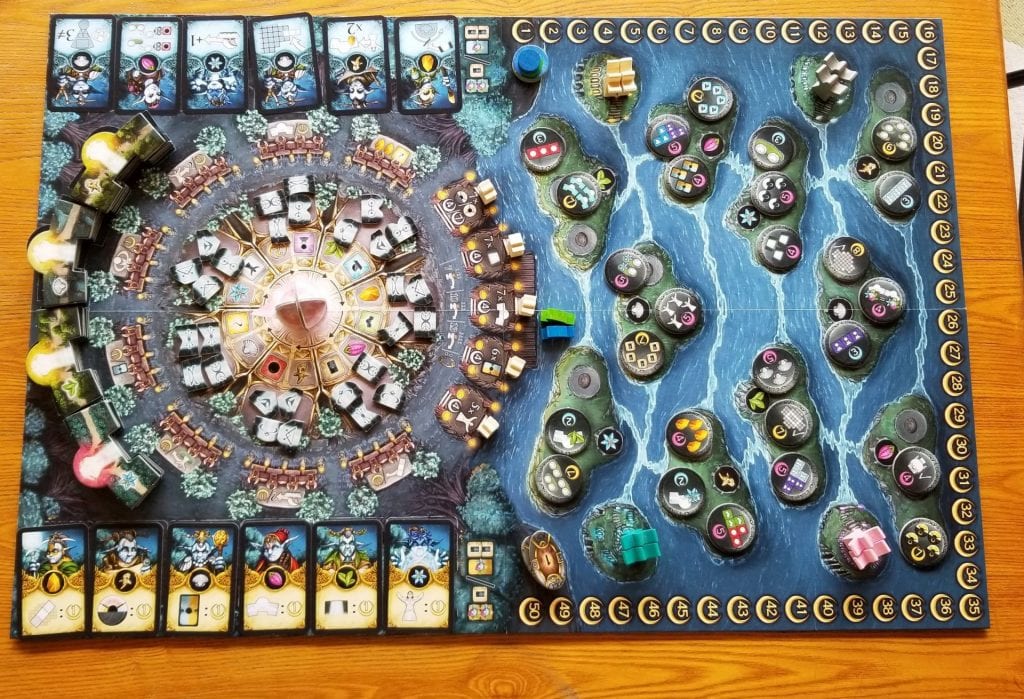
At one end of the game board are the various islands. Each of these will have been seeded with a number of randomized Quest tiles (based on player count) with four of the islands having the various Guardians placed on them.
At the other end of the board is the Great Bonfire area with spaces for two rows of Specialist and Elder cards on either side of it. The outer ring of the Great Bonfire is composed of 5 Common Tasks which have Neutral Novices placed on top of them, as well as the High Council area which depicts rewards the players can earn for performing these Common Tasks. The inner ring is broken into several pie slices. Each slice will have been seeded with a collection of Portal tiles and also features an illustration of an action tile type and a resource type.
There is also an area at the end of the board to hold 4 face-up Path tiles. The purpose of all of these various elements will be explained shortly.
Player Setup
Each player receives an Action Overview board, a Player board, 8 Fate tiles of their chosen color, a collection of 10 Offering tiles, a wooden Score marker (which gets placed onto the 0 of the score track), 1 Ship (which is placed onto the dock area between the Great Bonfire and the islands area), 1 Guardian, and 7 Novices.
The player’s area will look something like this:
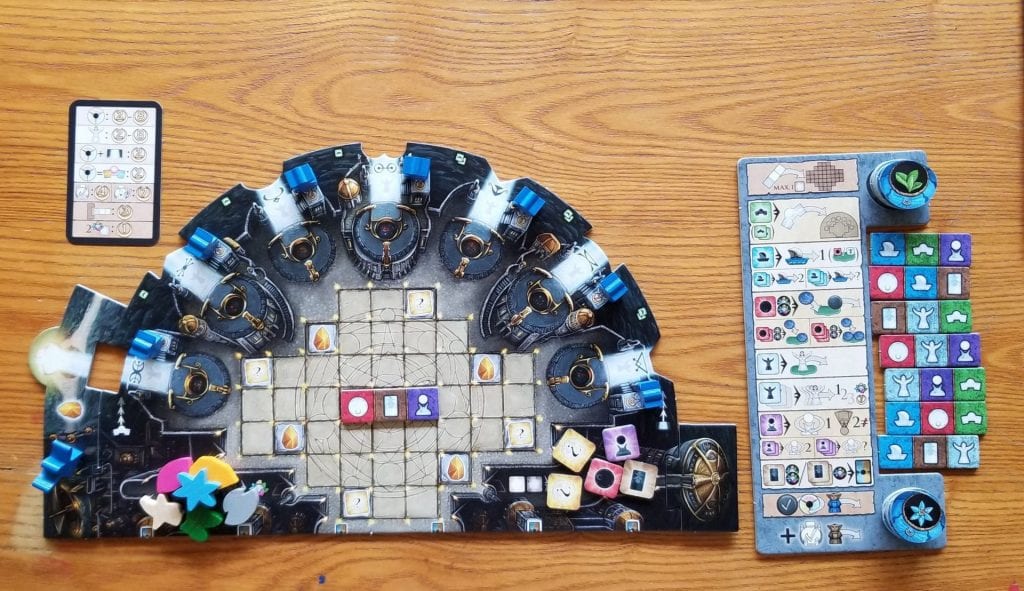
The Player board is a semi-circle with the flat edge facing the player. In the center of the board is the area where the Fate tiles will be placed during the course of the game. Bordering this area are several circles which will eventually hold Task tiles. Sandwiched between the Task tile area and the outer edge of the Player board is the area where the player’s Novices will be housed.
Finally, the outer edge of the Player board features several keyed notches. These notches, used in conjunction with the Portal tiles, will be how the players attach Path tiles to their Player boards eventually. At the beginning of the game one such Path tile is provided to each player and their Guardian is placed atop it. Each player will also have been provided a random Extension tile which is connected to the other end of the unconstructed path. One of these Extension tiles features an illustration of a roof. This signifies that the owner of this tile is the Starting Player.
Anatomy of a Round
I have discovered over my several plays of Bonfire with new groups that it is not an easy game to teach. There are a lot of moving parts that interact and interconnect with each other and it can be difficult for newer players to wrap their minds around the various components and how they function within the framework of the game. Fortunately, though, each player is provided an Action Overview board. Not only does this provide a quick resource to remind the players how things work, but it is also an excellent guide for teaching.
For the sake of brevity and clarity, I am going to glide down this board without going into detail about how each action works. I will, however, go into further detail about each action in its own subsection later.

Here are the actions in order from the top of the Action Overview to the bottom:
- Place a Fate tile and Gain Action Tiles
- Build a Path
- Move Your Ship
- Receive a Task
- Retrieve a Guardian
- Make a Procession
- Use the Great Bonfire
- Recruit a Gnome
- Ignite a Bonfire
- Bonus Action (after fulfilling a Common Task)
On a player’s turn, they will either perform action 1, one of the actions from action 2-8, or perform action 9.
Option 1: Place a Fate Tile and Gain Action Tiles
Each player begins the game with 8 Fate tiles. 1 of these will have been placed during setup and the other 7 will have been randomly arranged into 7 rows within the designated area of the Action Overview board. Each of these Fate tiles contains 3 differently colored icons (each corresponding to a type of Action tile) of the 6 different Action tile types: green, blue, red, white, purple, and brown. During setup, each player will have received 1 of each of the Action tile types with which to begin the game (along with some duplicates generated from placing the first Action tile onto their player board) along with 2 gold Action tiles.
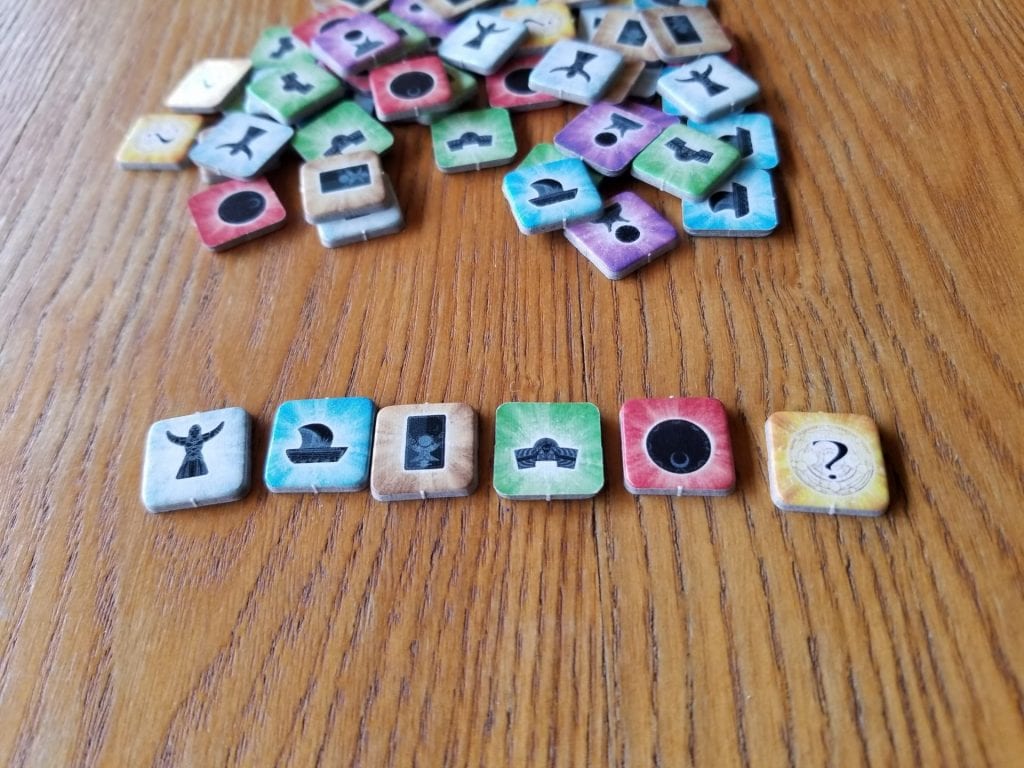
If a player begins their turn with 1 or less Action tiles in their supply, then they may perform Option 1: Place a Fate Tile and Gain Action Tiles. The player selects the Fate tile from either the top or bottom row of their available tiles and then places it onto their player board so that it is orthogonally adjacent to at least one other Fate tile that has already been placed there. They will then receive 1 Action tile for each of the icons on the chosen Fate tile. Additionally, if the icons are placed so that they match the icons next to them, they will earn additional Action tiles.
To better illustrate this, consider this example:
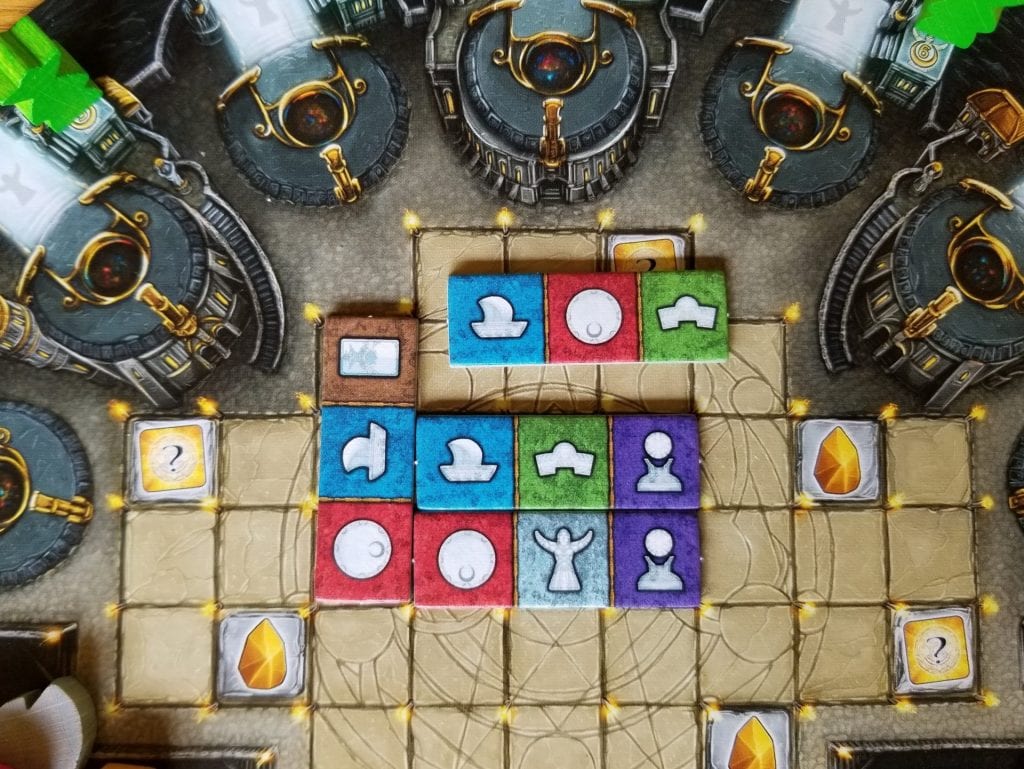
If the player covers up a Gold resource icon, they receive a Gold resource (we’ll get to the resources and their uses in a bit). Covering a gold Action tile icon nets the player a gold Action tile.
Option 2: Take an Action
In an effort to keep this as brief as possible, I am going to describe each of these actions in a general sense. I don’t want to bog you down with a lengthy rules summary, but it’s important to know how these actions work in order to understand how to play the game. Whenever asked to pay a resource or an Action tile, you can always substitute a gold resource/Action tile for any color or any 2 resources/Action tiles for a different resource/Action tile.
Build a path – Pay 1 or 2 green Action tiles, select 1 of the available face-up Path tiles, and place it on the left side of your Player board, flush against the edge of the last placed Path tile.
Move Your Ship – Pay 1 to 3 blue Action tiles to move your ship along the waterways to another island. The number of Action tiles paid determines how far the ship can move.
Receive a Task – Pay the resource depicted on the island along with one of the resources depicted on the top of one of your face-up Offering tiles on your Action Selection board (your choice). Also pay the required number of red Action tiles. Place the Task tile (icon side up) into one of the Task circles on your player board and replace it with the Offering tile that you previously selected (which is placed icon side down). The amount of red Action tiles paid is equal to 1/2/3 for your first/second/third Offering tile being placed on the island.
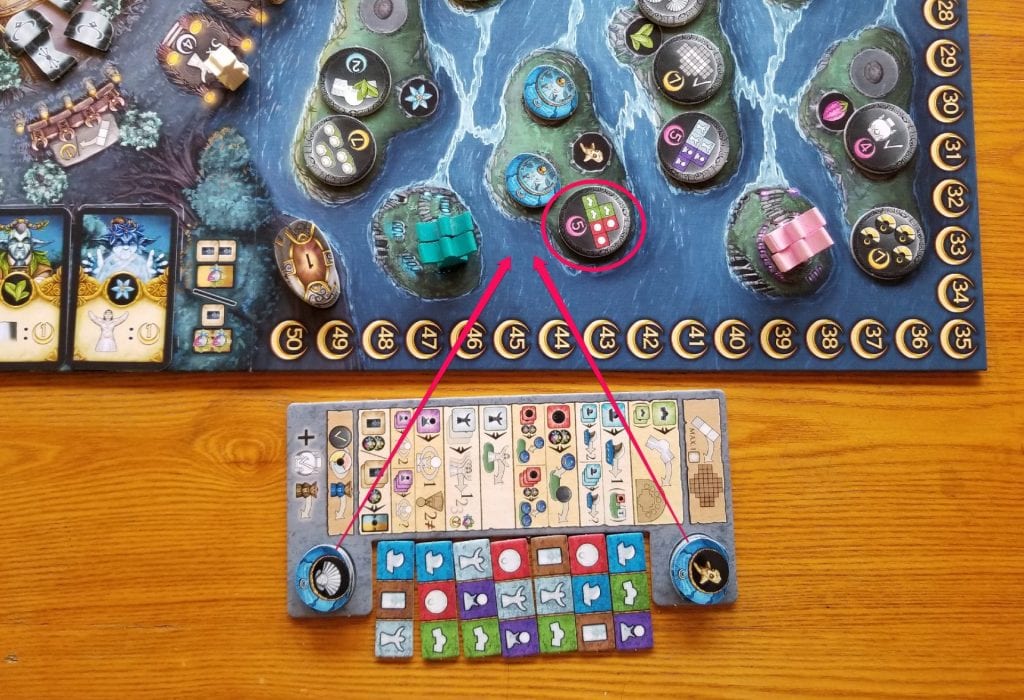
Retrieve a Guardian – Pay 1 white Action tile to the supply and move 1 Guardian from the island to the beginning of your path on your Player board. You may only ever have 1 of each Guardian color on your Player board.
Make a Procession – For each white Action tile you pay, your Guardians may move 1 step along the path either onto the next Path tile or through one of the Portal tiles (see Use the Great Bonfire) onto an adjacent Bonfire (see Option 3: Ignite a Bonfire).
With the exception of the starting Path tile, Guardians may never occupy the same Path tile. If a Guardian is able to move forward successfully and ends its movement on a new Path tile, the player receives whichever resource is depicted on the tile.
Use the Great Bonfire – Pay 1 to 3 purple Action tiles to rotate the Great Bonfire so that it points to a new pie slice. Then collect 2 of the 3 possible rewards shown: some combination of a Portal tile, a resource, and/or an Action tile. The total number of pie slices you can rotate the Great Bonfire depends on the number of purple Action tiles paid.
A Portal tile collected must be placed into the next available notch on the right side of the Player board and these must be done in order. So you cannot collect a Portal tile if there is no legal place to put it.
Recruit a Gnome – Select one of the available face-up Specialist or Elder gnome cards to purchase. Then pay either 1 brown Action tile and 2 of the resources shown on the card or 2 brown Action tiles and 1 of the resources. Elders provide their benefit immediately (victory points based on how well you’ve met certain conditions at the time they are acquired) while Specialists provide ongoing benefits such as extra ship movement, extra resources gained when performing specific actions, etc.
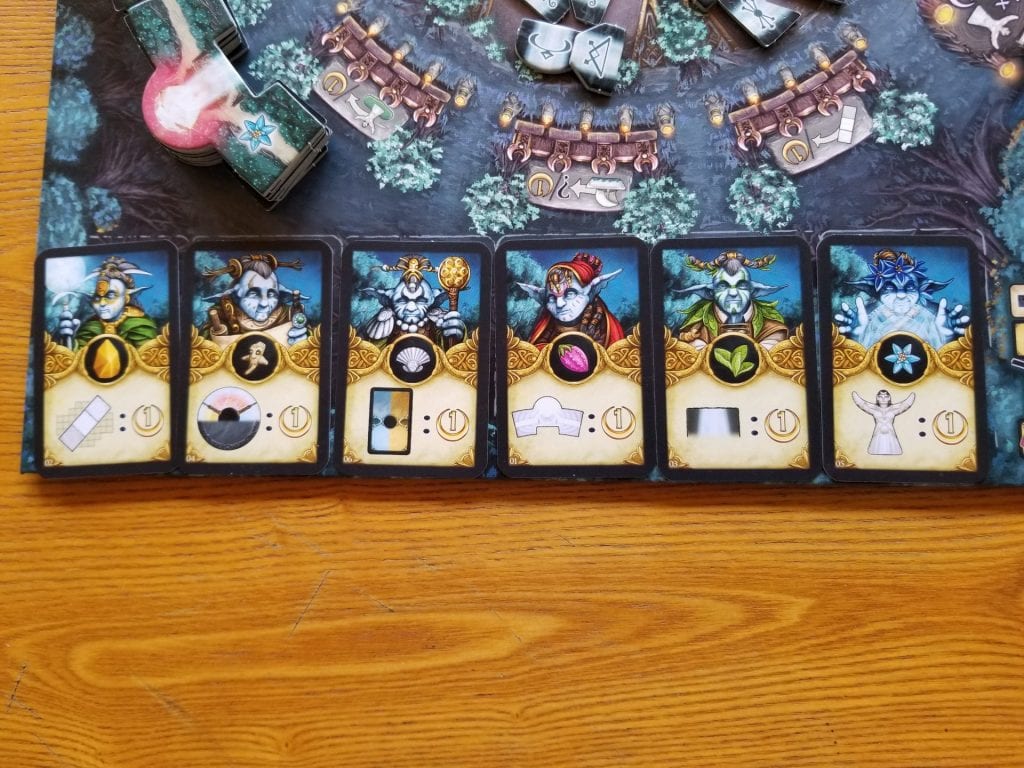
A player may only ever recruit a total of 6 gnomes throughout the course of the game. Recruited gnomes are placed alongside the bottom of the Player boards. You may never dismiss or replace an already recruited gnome, so choose wisely.
Option 3: Ignite a Bonfire
Select one of the Task tiles on your Player board for which you have met the conditions and flip it over. Then move the Novice there to any of the High Council spaces where none of your Novices are present and collect the associated reward.
The Bonus Action
If you are the first person to meet the criteria for one of the 5 Common Tasks–have 7 Tasks, have 5 Guardians, have 7 Portals, have 6 Gnomes, and have 7 Path tiles–then you may take the Neutral Novice from the appropriate Common Task and send it to any of the High Council spaces where no other Neutral Novices are present and collect the associated reward.
The Bonus Action can be completed multiple times in the same turn if you are able to fulfill multiple criteria in the same turn.
End Game and Scoring
The end game is triggered once a certain number of Novices (determined by player count) have been sent to the High Council. When this occurs, the player that began the game with the Start player Extension receives 5 Countdown tiles which are placed in a stack in descending order with the 5 on top and the 1 on bottom. Once the round progression returns to that player, it means there are 5 rounds left. Each return to that player results in one of the tiles being removed. When the last one is removed, the game is over and final scoring is performed.
While players can earn immediate victory points from claiming Elders or taking points from High Council or Great Bonfire rewards during the game, the glut of a player’s points will come from end game scoring. Understanding where points come from at the end of the game will be tantamount to making educated decisions while the game is being played.
Players will gain points from:
– Reignited Bonfires (Task tiles that have been flipped over)
– Guardians which have been moved through Portals
– Portals adjacent to Bonfires
– Bonfires adjacent to same-colored Path tiles
– Points for completed Common Tasks
– Points for leftover Fate tiles
– Points for leftover resources and Action tiles
Thoughts
For the longest time, my list of Top 5 Feld games looked like this:
- Oracle of Delphi
- Trajan
- Bruges
- The Castles of Burgundy
- Macao
Bonfire has changed that. This game easily slides its way into second place for me, pushing Macao off of the list. Trajan has long been considered one of Feld’s heaviest games, both in terms of its complexity as well as how the different mechanics intertwine. Bonfire has a similar depth to it, but it stands above Trajan in one major way: theme. While the story behind Bonfire is outright weird and leaves a lot to be desired, its fantastical backdrop is loads more exciting than Trajan’s backdrop.
The fantasy theme also opens up artistic avenues that simply do not exist in a game about Ancient Rome. Bonfire’s artwork is bold and colorful, while also retaining a sense of dark foreboding. As the game begins, it’s hard to see how the removal of the bonfires has affected things. Only after reigniting the bonfires and constructing the paths and portals, returning vibrancy to the realm, does it become clear. You can understand why the gnomes would become so despondent and so desperate to return their blighted world to its original beauty. Dennis Lohausen has done an amazing job of bringing the world of Bonfire to life. That shouldn’t come as any great shock because it is, after all, Dennis Lohausen – a gifted illustrator that has worked on some of my favorite games: Fields of Arle, A Feast For Odin, the aforementioned Oracle of Delphi, and now this one.

My appreciation for this game extends beyond just its thematic setting. Not only does it look good, but it’s also a very good game. Aside from the rounds where exercising Option 1 is your only real option, every other round is one filled with delicious tension as you try and figure out which decision you want to make and which pathway you’d like to follow to victory. That doesn’t discount Option 1, though. There’s a lot of nail biting there as well. Having to figure out which Fate tile you want to place and where you want to place it isn’t a simple decision. The rewards from doing so will largely dictate your options in the following rounds, but there are also several Task tiles that can only be completed by having certain icon configurations in your Fate tile area. There will be plenty of times where you’ll have to decide between getting a bunch of stuff or placing a Fate tile in a less rewarding way in order to complete a task. Savvy players will have looked ahead and figured out how to effectively do both.
Once you’ve got a pile of Action tiles and resources, the world is your oyster. Do you want to try to spend each separate Action tile as efficiently as possible–one tile, one action–or should you use the built-in conversion to perform an action you otherwise wouldn’t have access to? Maybe you desperately need a particular Portal tile but lack the purple Action tiles necessary to rotate the Great Bonfire. Do you overspend to get precisely what you want or do you hold off and risk one of your opponents moving the Great Bonfire and overshooting the space that you need? If you move the Great Bonfire right now, though, one of your opponents may snatch up that Elder that would score you a bunch of points in order to prevent you from taking it. So maybe go after the Elder instead? In true eurogame fashion, every action you take in Bonfire comes at the cost of not performing some other beneficial action.
These tough decisions are both a strength and a weakness. It’s in those tense, brain burning moments that you come alive, but those moments can induce some very noticeable analysis paralysis. While poring over each possibility and its repercussions makes each and every one of your turns interesting and exciting, it’s a different story when it’s someone else’s and you’re having to watch them perform the same mental gymnastics. Aside from sniping Elders to deny your opponents access to them, the loosest definition of player interaction, there isn’t much player interaction involved and this could be an instant turnoff for some.

Another negative would be Bonfire’s learning curve. There are a lot of components and a whole litany of possible actions that a player can perform on their turn. It can be difficult to wrap your head around how each of them function separately and even more difficult to understand how each one affects, and is affected by, the others. Teaching the game to new players can be a challenge. Learning the game can be even more of one.
That being said, once you finally start playing, everything falls into place and turns go by very smoothly without a lot of rule book consultation. In fact, the only time the rule book was ever consulted in the games that I have played is when the players are trying to find specific Task tile or Gnome card references in the Appendix. I groused about how only having a single copy of such an important reference sucks in my review of Lorenzo il Magnifico and it bears repeating here. If you’ve got a game like this where every card and tile does something different then your Appendix a.) should be detachable from your rule book and b.) should be duplicated so that there is more than a single copy. In a game where there isn’t much to do between turns, allowing the non-active players to understand the components in play gives them something to do.
So there you have it. I love Bonfire. I think it’s a pretty great game. It’s got its issues (what game doesn’t) but they’re nothing major and the fun that I derive from playing the game far exceeds anything else. I’m a Stefan Feld junkie and I look forward to his 2021 lineup: Kokopelli (a brand new game), Hamburg (a reimplementation of Bruges), and Amsterdam (a reimplementation of Macao). Keep your eyes peeled for my reviews of those in the future!


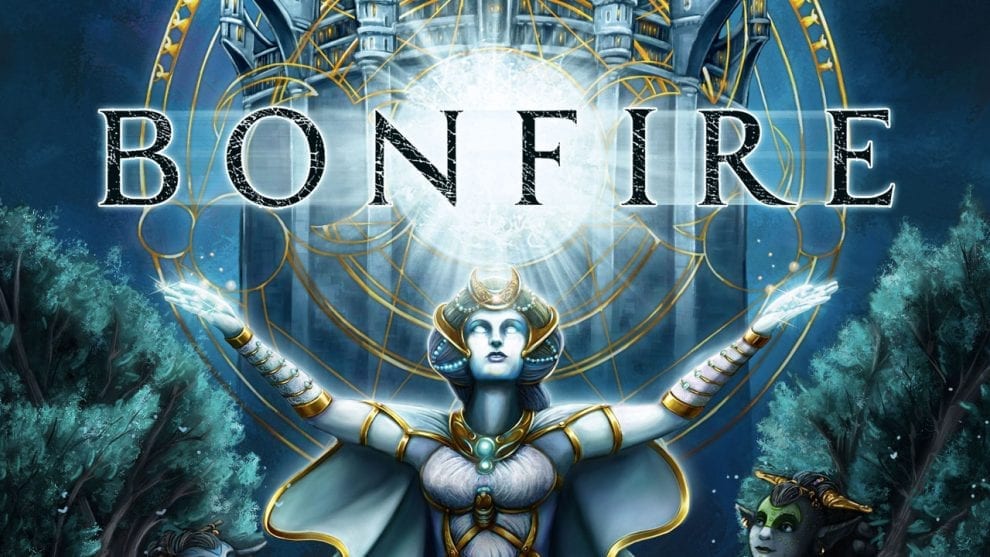
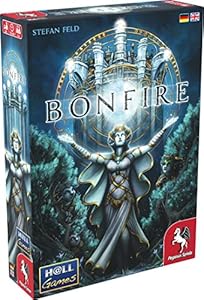
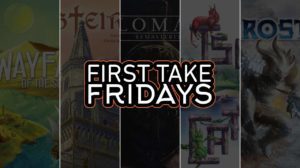
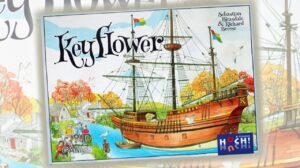
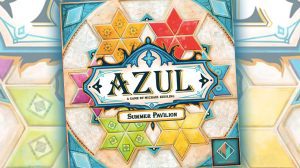
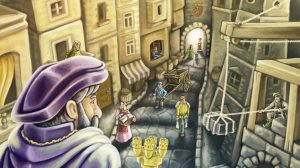




I absolutely adore these Feld reviews — extremely enjoyable and helpful. Thank you, David!